Ever found yourself wide awake at 2 a.m., wondering if your dog secretly runs on caffeine? Between barking at shadows, zooming off into the bushes, or flat-out ignoring your commands, some dogs act like they wrote their own rulebook.
While dogs are (usually) loving and loyal, certain breeds are more prone to pushing boundaries—and some of them are downright night-owl material.
Every dog has its own charm, but not every dog is built to follow orders. In fact, according to Stanley Coren’s intelligence rankings, breeds were ranked based on their obedience and working intelligence, and some of the most independent-minded breeds landed near the bottom.
That’s not to say they’re “bad.” Many of these free-spirited dogs shine in creativity, loyalty, or sheer personality. But if you’re after a dog that naps quietly and obeys your every word, you’re in for a bumpy (yet still lovable) ride.
Let’s take a look at the dog breeds that tend to keep their owners on their toes—sometimes well into the night.
Key Takeaways
Discover which dog breeds are the lovable rebels of the canine world—the ones most likely to test your patience, ignore commands, and keep you up all night.
Learn why stubbornness and independence don’t always mean a dog is “bad,” and how these traits actually tie back to their fascinating history and instincts.
Find out what it really takes to handle these high-energy, strong-willed breeds, from training challenges to quirks like digging, escaping, or barking at shadows.
See how these dogs, despite their mischievous streaks, can become loyal, entertaining, and unforgettable companions when matched with the right owner.
Worst Behaved Dog Breeds Keeping You Up All Night
1. Shiba Inu
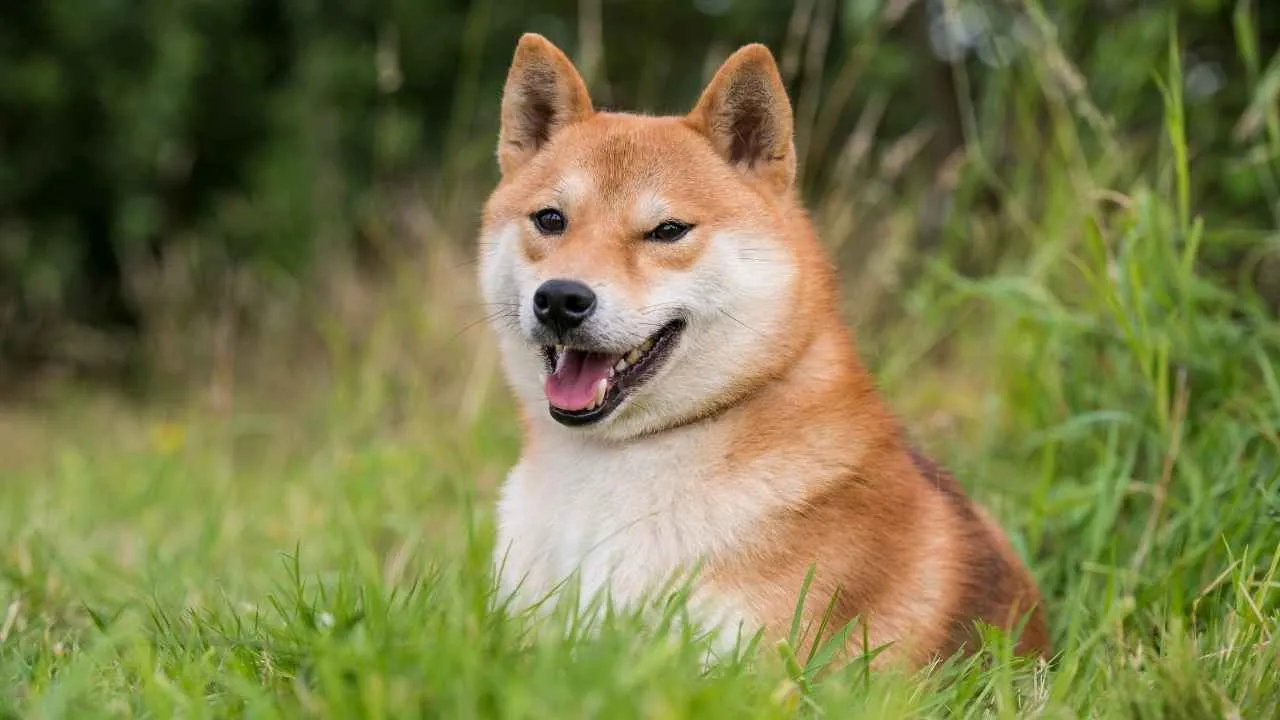
The Shiba Inu is an ancient Japanese breed that belongs to the spitz family, along with huskies and American Eskimo dogs.
Originally bred for hunting, they are small but strong dogs with a bold and confident personality. Their fox-like face, curled tail, and upright ears give them a unique and striking look.
Shiba Inus have a reputation for being stubborn and hard to train. First-time owners often find this challenging, but Shibas are also very intelligent.
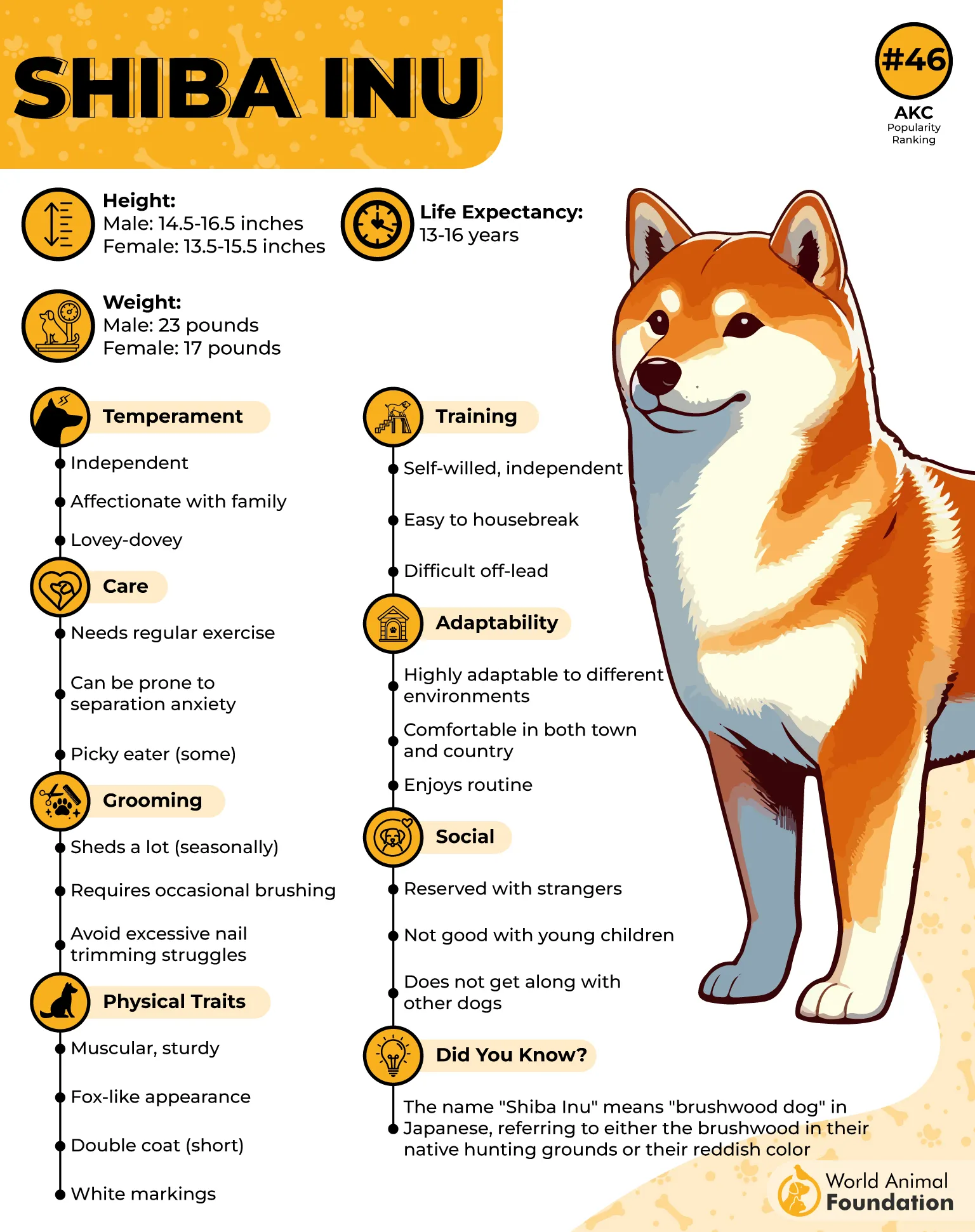
With time, patience, and consistent obedience training, they can learn basic commands. Their independent nature makes training tricky, but the right approach can bring good results.
This challenging breed is known for being aloof and sometimes slow to bond with people. They are spirited and self-assured, often preferring to do things their own way.
WebMD mentions that they groom themselves like cats, keeping their thick double coat neat. Shibas may look cuddly and sweet, but they are also strong-willed, making them both challenging and rewarding pets.
2. Akita
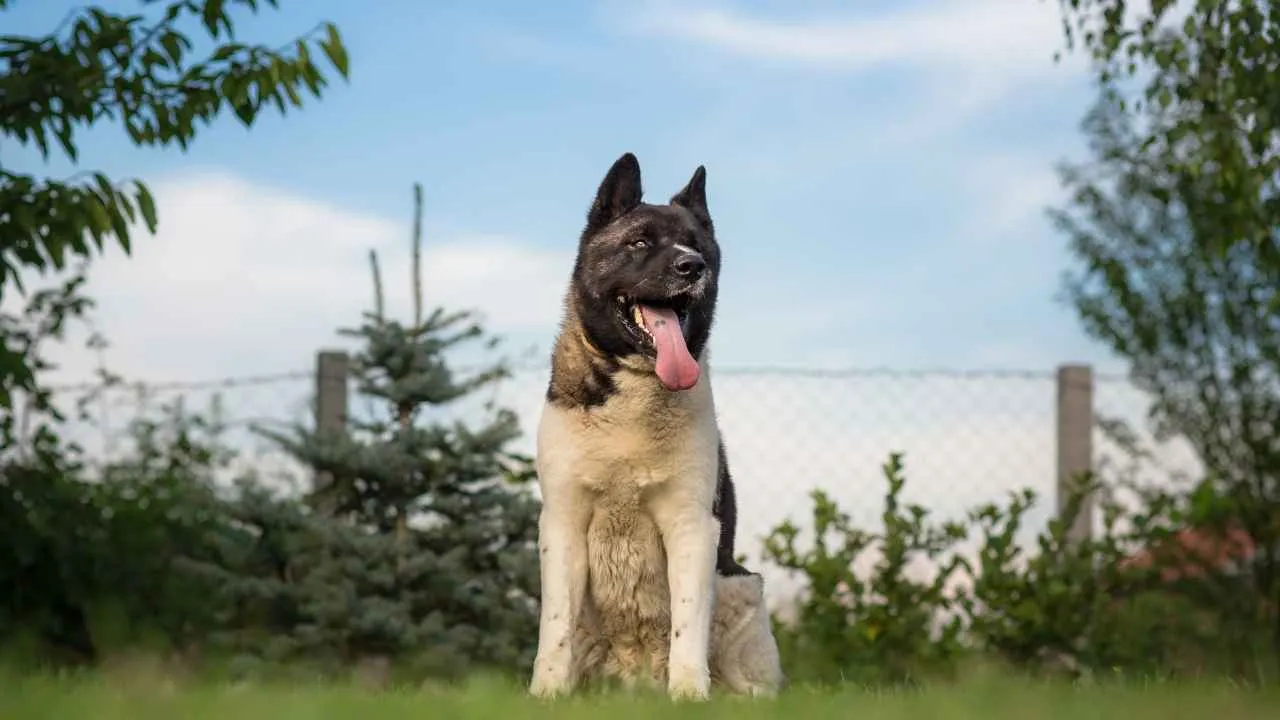
The Akita is a large Japanese breed originally used for hunting. They have a thick double coat, a curled tail, and erect triangular ears that give them a teddy bear-like look.
Despite their appearance, they are strong, confident, and often headstrong. Akitas are loyal and devoted to their families, but they are best suited for experienced dog owners.
Training an Akita can be more challenging than with many other breeds. They are independent and strong-willed, which makes early training and socialization very important.
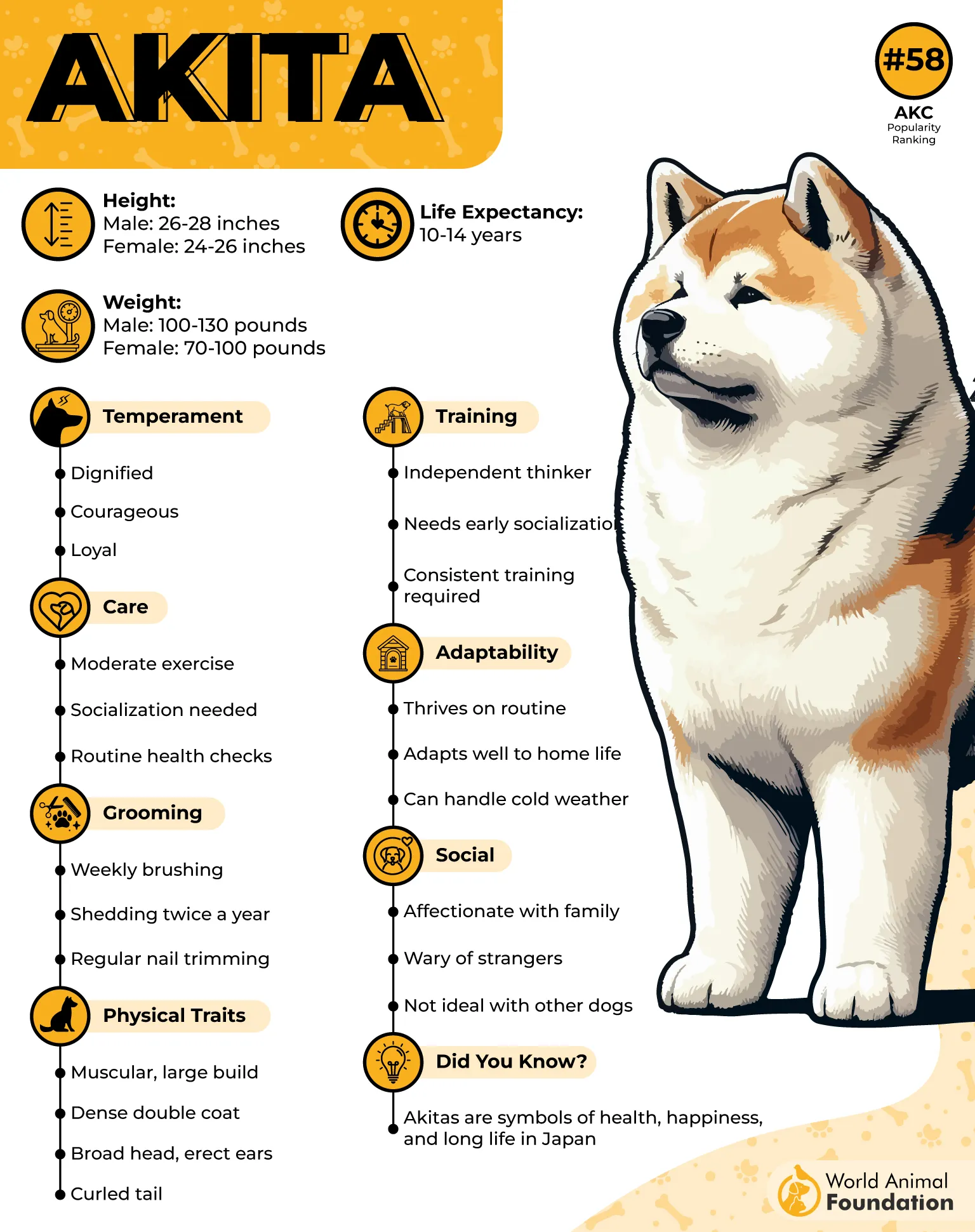
Puppy classes are highly recommended, as they help Akitas learn commands and interact with other dogs. The earlier you begin training at home, the better the results will be.
Akitas are not known for being overly affectionate, but they form deep and lasting bonds with their owners. They have protective instincts and make good guard dogs for families if needed.
While they are loyal companions, Akitas are not always friendly with other animals and may not be the best choice for families with young children or first-time dog owners.
3. Chihuahua
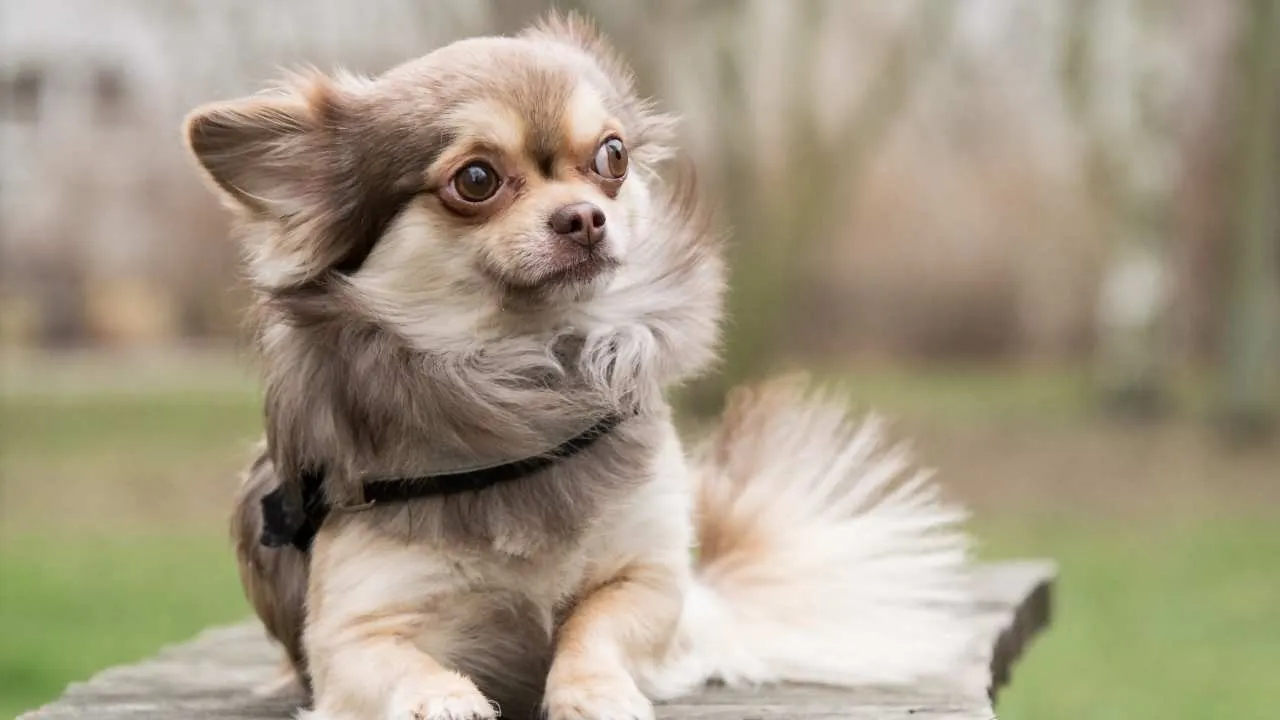
The Chihuahua is one of the most popular dog breeds in the United States and belongs to the Toy breed group. Known for their wide eyes, erect ears, and tiny frame, they are instantly recognizable.
These little dogs may be small, but they are known for their big personalities. Chihuahuas are fiercely loyal and often protective of their owners. Without proper training and socialization, this loyalty can lead to barking, stubbornness, and undesirable behavior toward strangers.

Many owners assume that their size means they won’t cause trouble, but Chihuahuas can be surprisingly difficult to manage without consistent guidance.
Training a Chihuahua takes patience and time, but with the right approach, they can become affectionate and well-behaved companions.

They thrive on attention and love, but they also need structure and proper socialization to avoid becoming overly protective. While they may be stubborn, their devotion and charisma make them lovable canine companions for those who understand their strong-willed nature.
4. Shar Pei
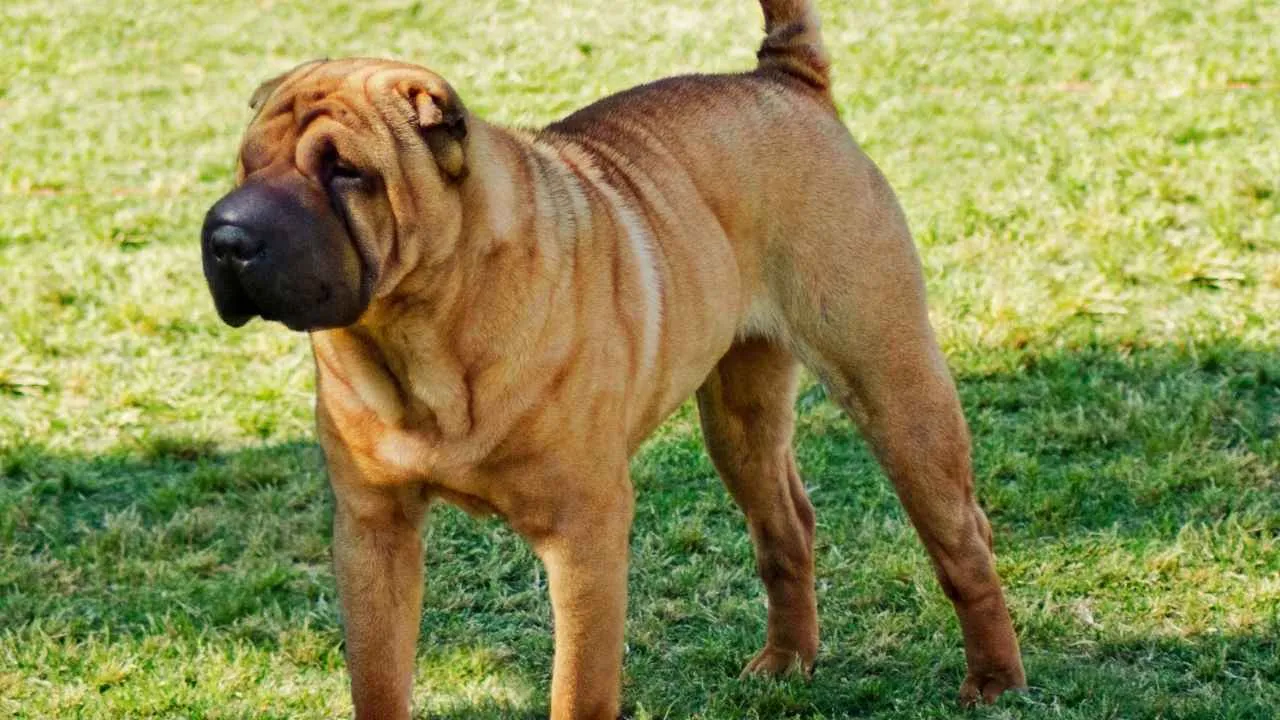
The Shar-Pei is an ancient Chinese breed that dates back over 2,000 years to the Han Dynasty. Its name literally translates to “sand skin,” as mentioned by Pedigree, a reference to its bristle-like coat.
This unique dog is instantly recognizable for its wrinkled skin, broad muzzle, tiny ears, and blue-black tongue.
Despite its unusual appearance, the Shar-Pei has often been misunderstood. Labeled in the past as a “Chinese fighting dog,” it carries a reputation for being aggressive. In reality, Shar-Pei dogs are independent, intelligent, and extremely loyal to their families.
They are calm and reserved at home but can be suspicious of strangers and other dogs. Without proper guidance, their natural guarding instincts can become a problem.
This breed requires firm training and early socialization. Shar-Peis are not a good choice for new pet parents, as their stubborn and strong-willed nature can be challenging to manage.
They need patient handling, consistent rules, and extensive socialization from a young age. With the right care, however, the Shar-Pei becomes a dignified and devoted companion.
5. Beagle

The Beagle is one of the most popular hound breeds in the United States. Known for their adorable faces, floppy ears, and pleading expressions, they are loved as both hunting dogs and family companions.
Originally bred to hunt in packs, Beagles are social, cheerful, and full of energy. Their curiosity and playful spirit make them fun-loving pets that thrive on companionship.
According to AKC, Beagles are famous for their incredible sense of smell. This trait, rooted in their hunting history, makes them natural explorers. However, their strong noses often distract them, causing them to ignore commands.
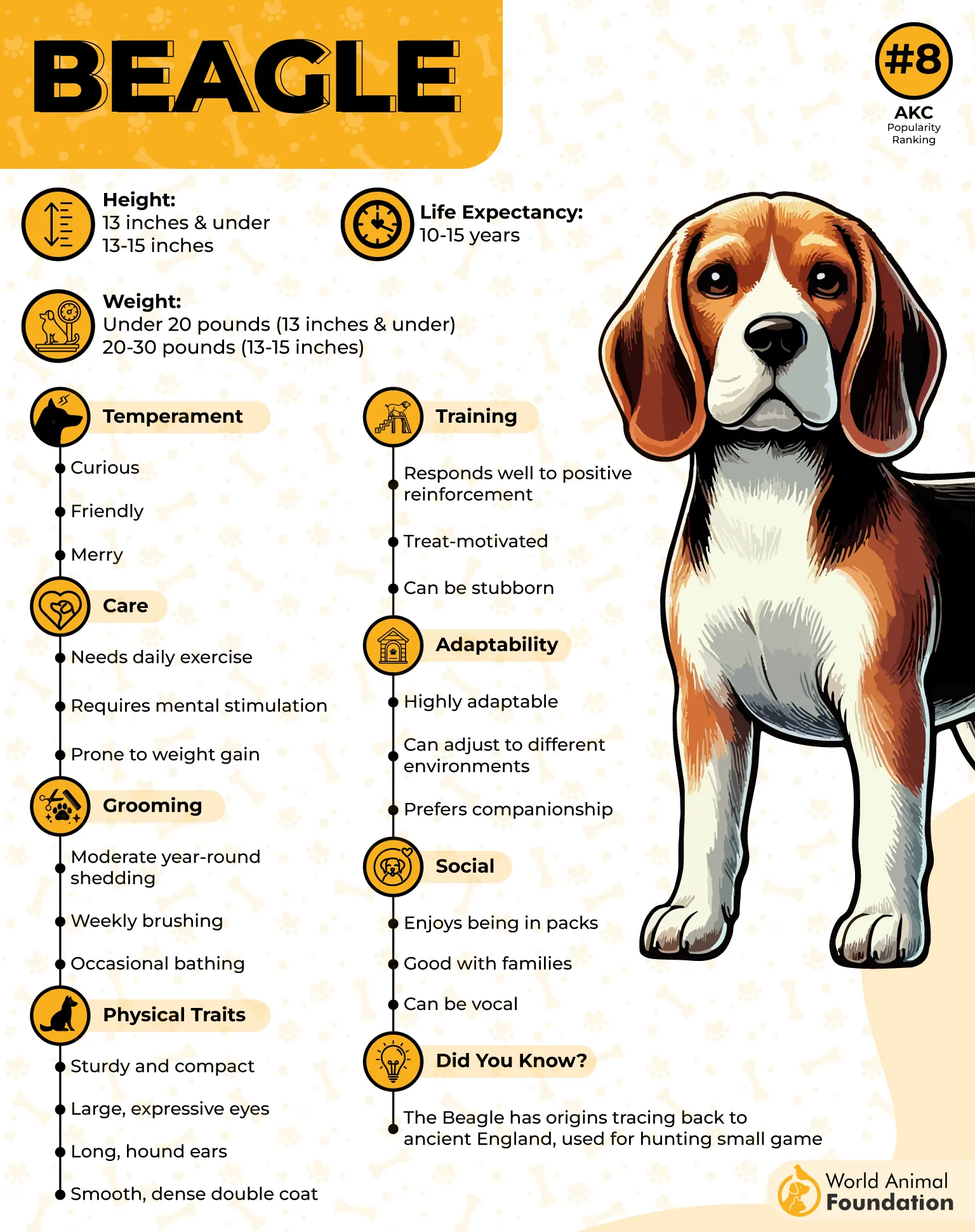
Their stubbornness and independence can frustrate owners, especially when training. A secured yard and creative, consistent training are key to keeping them safe and focused.
Despite their challenges, Beagles are incredibly affectionate, loyal, and happy dogs. They are merry in nature and love being part of a family.
With patience and persistence, they can be trained, though their curious personalities mean they are always ready for the next adventure. Their blend of charm, energy, and stubbornness makes them both demanding and amazing companions.
6. Afghan Hound
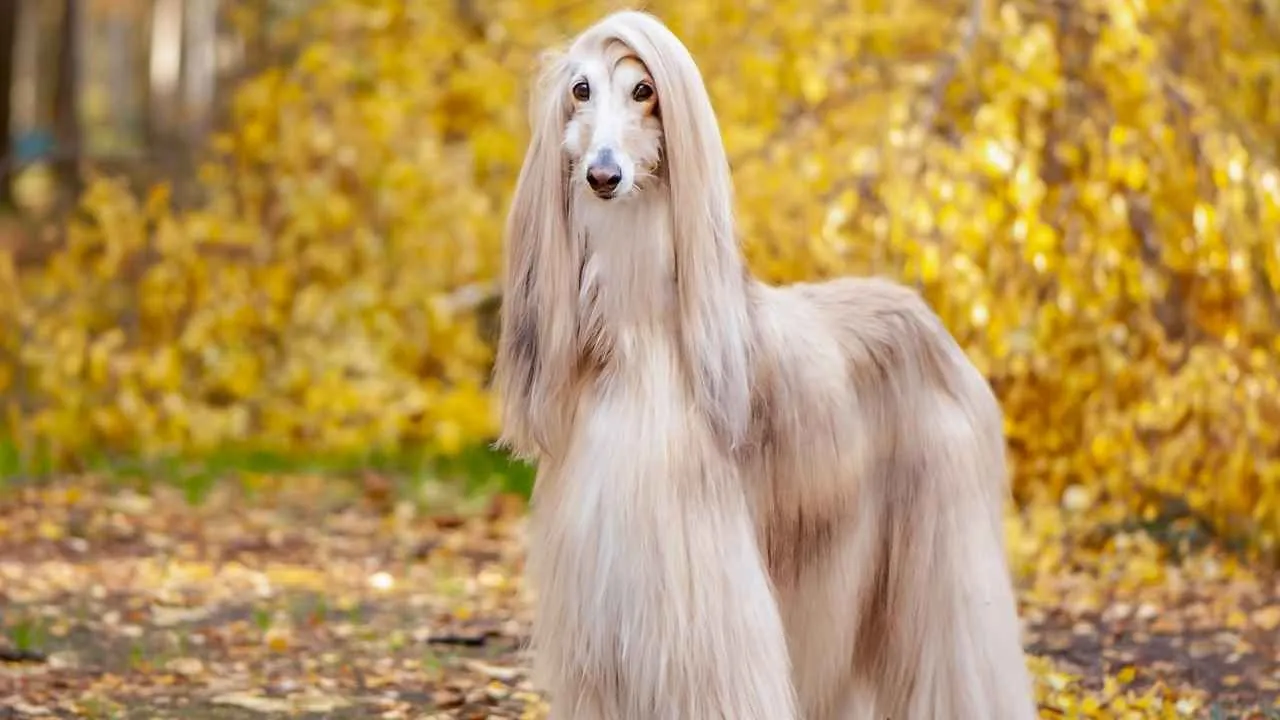
The Afghan Hound is an ancient breed that originated in the mountains of Afghanistan. Also known as Tāzīs or Balkh hounds, they were once called Persian Greyhounds. These dogs are famous for their long, silky coats and elegant, aristocratic appearance.
Afghan Hounds are graceful but fiercely independent. They rank low on obedience scales, not because they lack intelligence, but because they simply prefer to do things their own way.
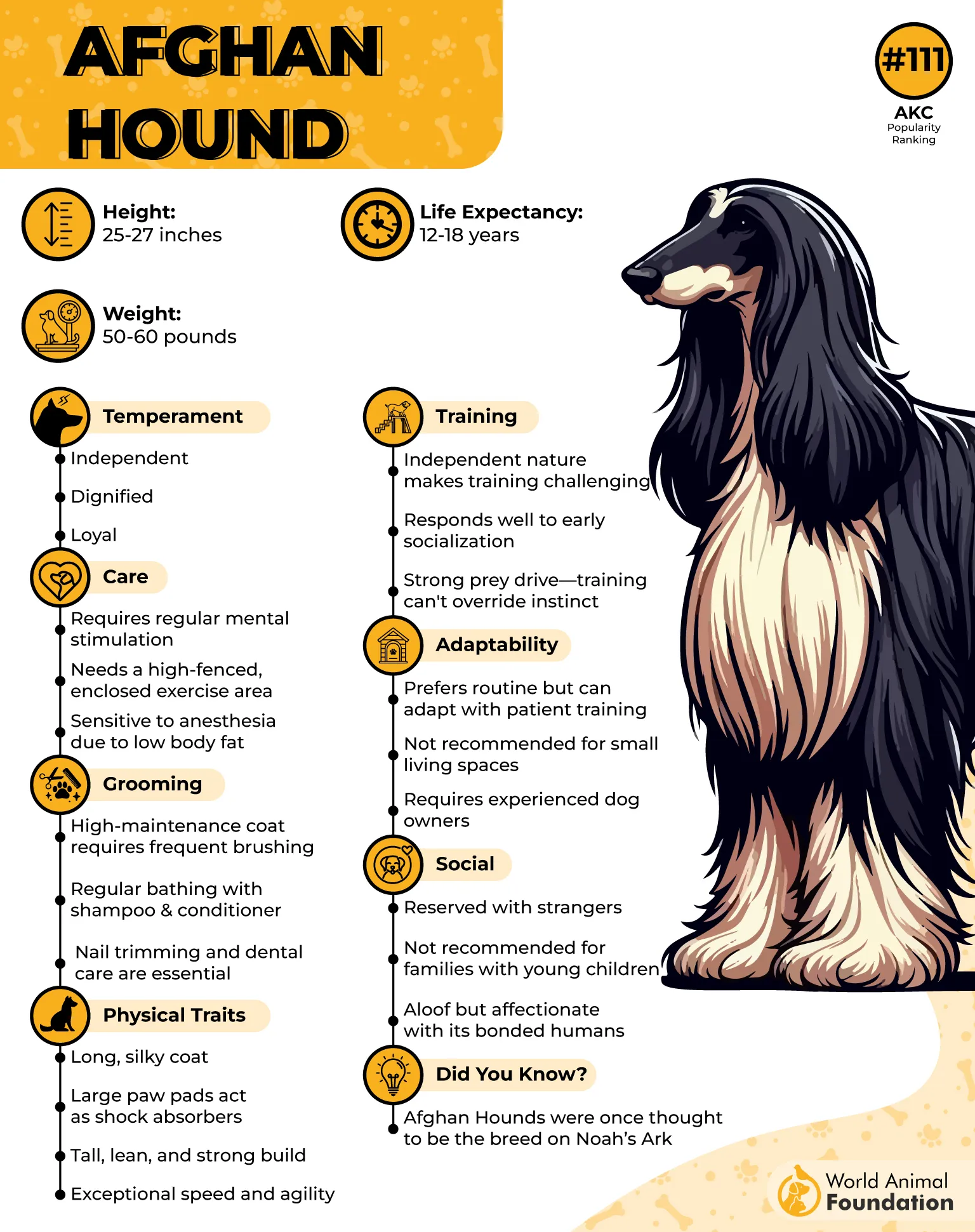
This aloof nature makes training challenging, requiring patience and creativity. Despite their stubborn streak, these large dogs carry themselves with dignity and have a regal presence that sets them apart from most breeds.
At home, Afghan Hounds reveal a softer side. They can be affectionate, loyal, and even playful with their families, often showing a surprising sense of humor. Their thick, flowing coats once served as protection in harsh mountain climates, but today they make the breed a show-stopping presence.
While they are not the easiest dogs to train, when paired with an experienced owner, Afghan Hounds can be devoted and unforgettable companions.
7. Parson Russell Terrier
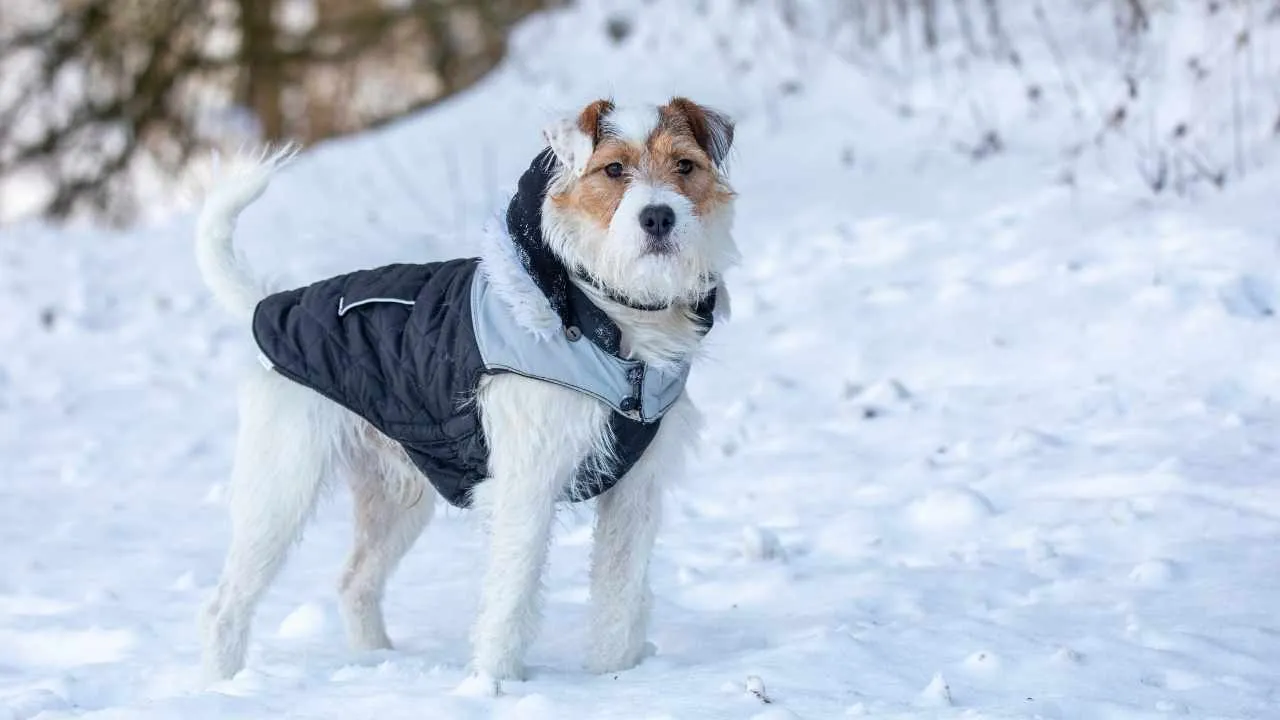
The Parson Russell Terrier, often called the Jack Russell Terrier, was first bred in England during the 1800s to help with fox hunting.
Small but powerful, these dogs were fast enough to run with hounds and fearless enough to dig into the ground and flush foxes from their dens.
This breed is known for its endless energy and sharp mind. Parson Russell Terriers are bold, clever, and quick to figure out problems on their own.
That independent streak can make them tricky to train, as they often prefer to follow their own ideas. Their lively personality makes them fun to be around, but it also means they need regular exercise and stimulation.
Parson Russell Terriers make loyal and engaging pets for active families who can keep up with them. They are spirited, determined, and sometimes stubborn, but their playful nature and charm win many hearts.
8. Siberian Husky
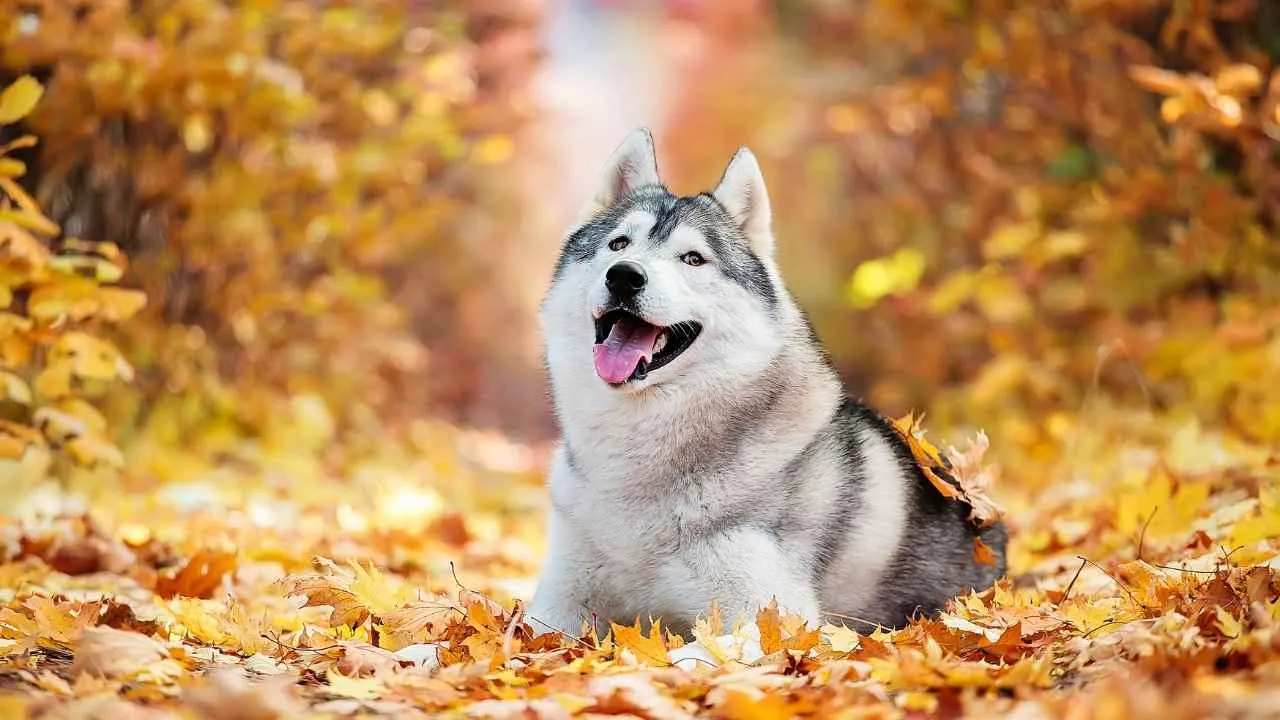
The Siberian Husky is a striking and athletic breed that originated in Northeast Asia as a sled dog. Developed to work in packs, they were bred to pull loads across vast frozen landscapes.
With almond-shaped eyes that can be brown, blue, or even one of each, and their thick double coats, Huskies have a wolf-like appearance that makes them one of the most eye-catching breeds in the world.
Huskies are full of energy and have a natural drive to run and explore. They are independent thinkers, often stubborn, and known escape artists.
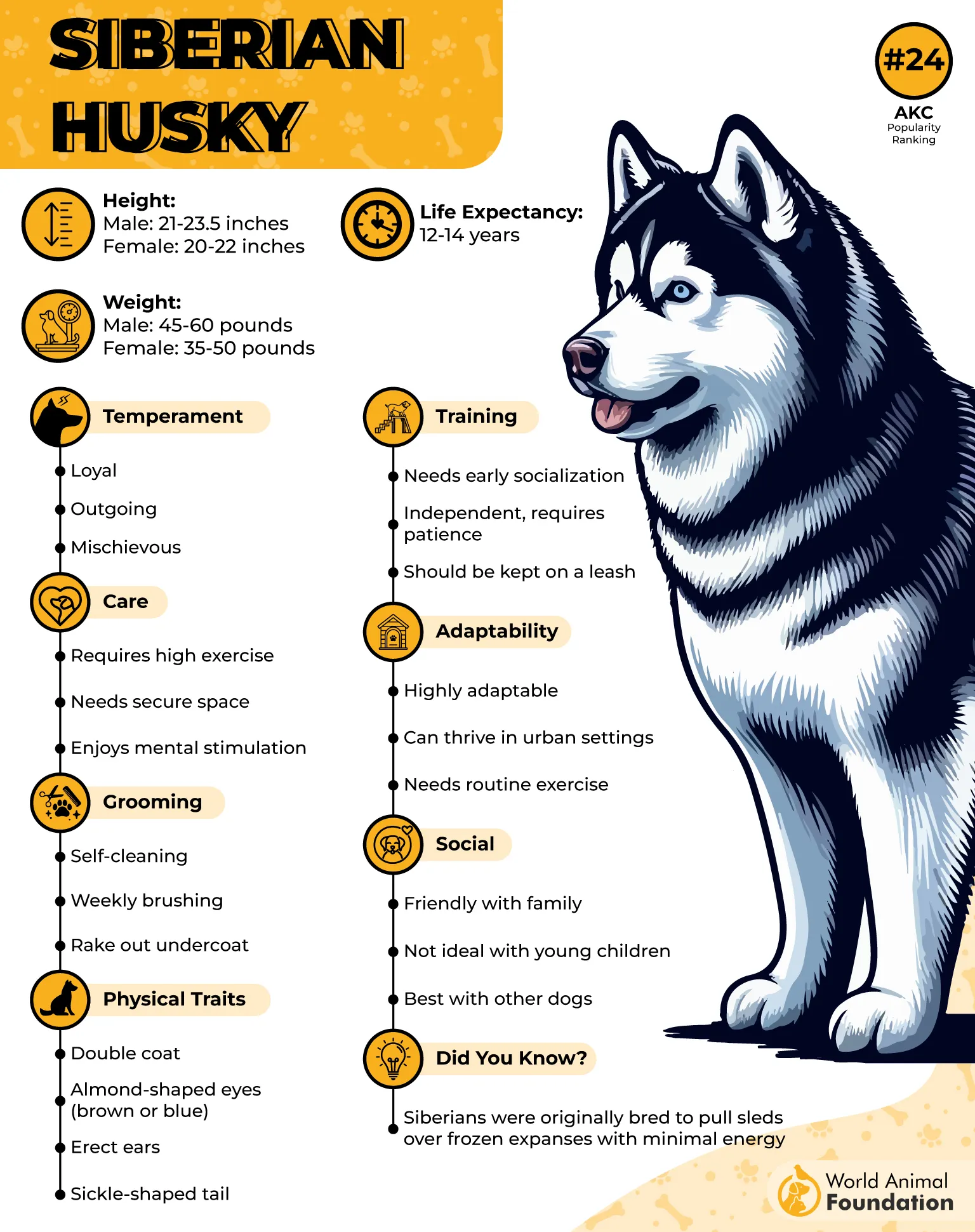
Their strong prey drive can make them difficult to manage around small animals. While friendly and sociable, their playful personalities sometimes make training a challenge. A secure yard and plenty of mental and physical stimulation are essential for this breed.
Huskies are naturally clean, with little odor, and their lively spirit reflects their wild origins in the tundras. With proper care and patience, they become devoted pets who never fail to keep life interesting.
9. Dachshund
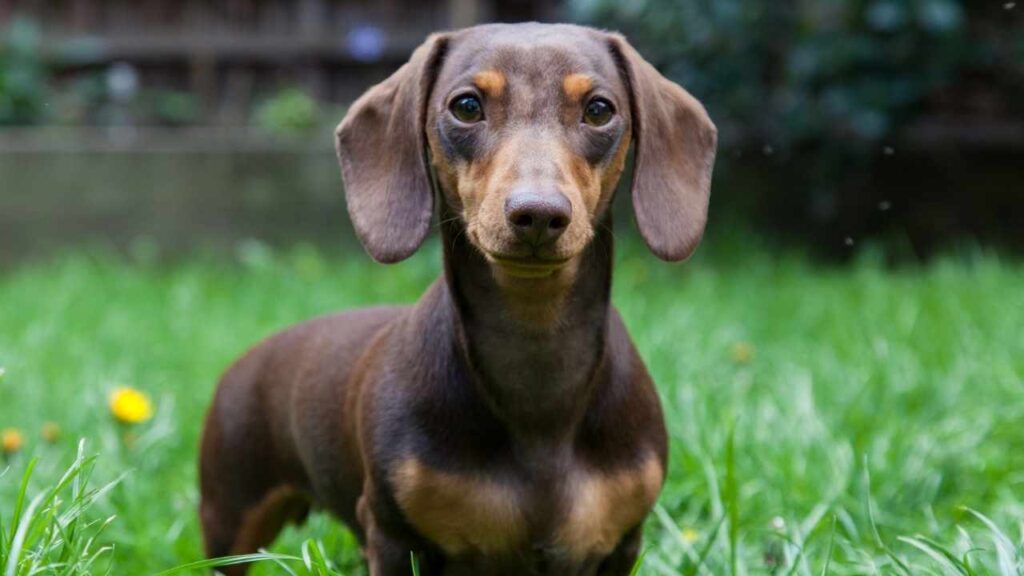
The Dachshund, also known as the “wiener dog” or “sausage dog,” is one of the most iconic breeds in the world. With their long bodies, short legs, and floppy ears, they are instantly recognizable and adored everywhere.
These little dogs may be small, but they are fearless. Dachshunds are strong-willed and often push boundaries, especially during training.
Their courage sometimes surprises even their owners, as they don’t hesitate to take on challenges much bigger than themselves. Their bravery, paired with their independent streak, makes them both entertaining and demanding companions.
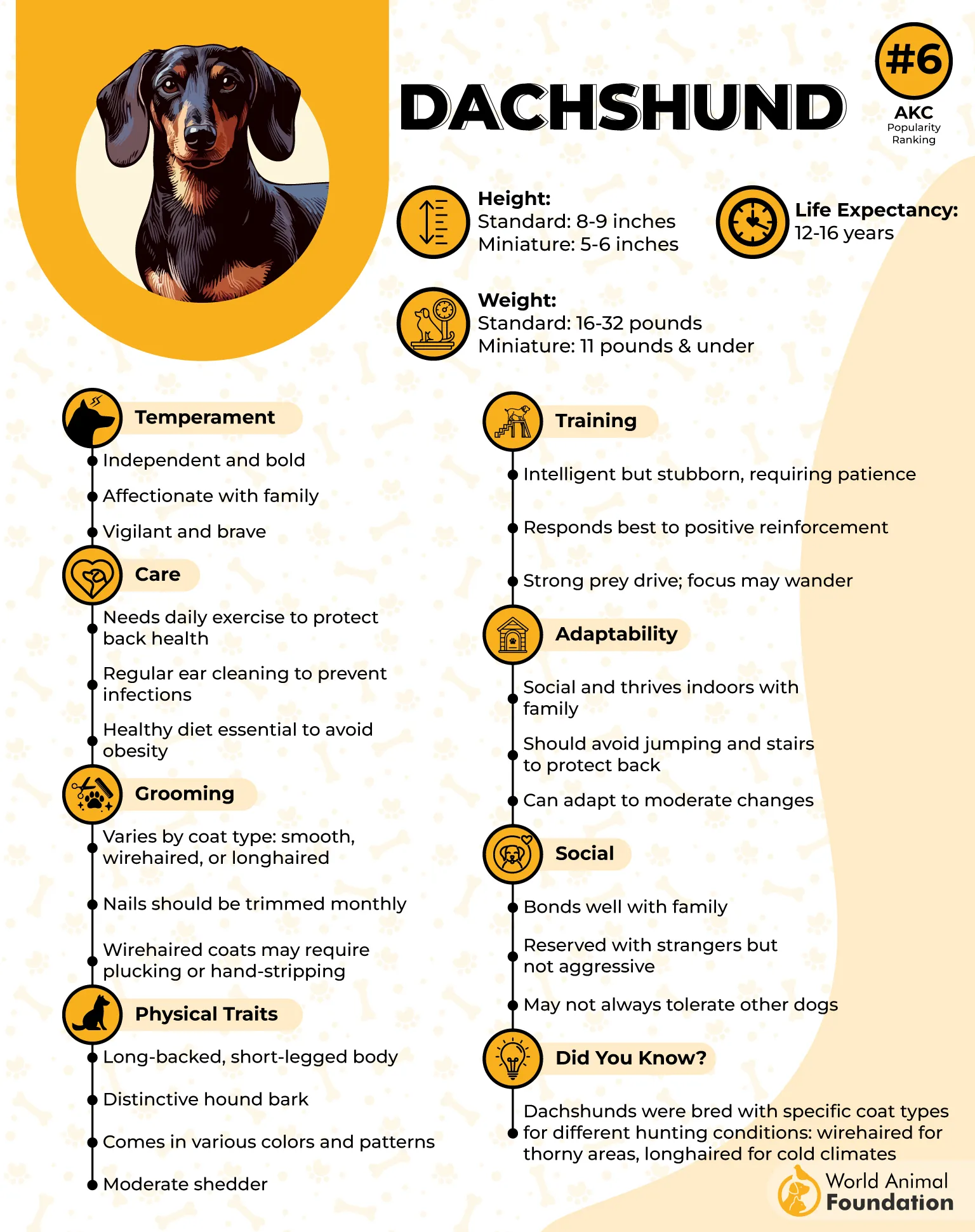
Training a Dachshund requires patience, firmness, and consistency. They are natural diggers, and while this can frustrate garden lovers, it is part of their heritage as hunters.
Dachshunds thrive when given tasks, games, and plenty of mental stimulation. Though they can be stubborn, their loyalty, charm, and big personalities make them delightful pets for those willing to put in the effort.
Conclusion
Bringing a dog into your home is a rewarding experience, but dog ownership comes with its challenges. From stubborn temperaments to destructive behaviors, every breed has its quirks. Some dogs require more patience, training, and attention than others, especially when they aren’t properly socialized or given enough stimulation.
Whether it’s separation anxiety, the urge to run off leash, or clashes with other pets, understanding your dog’s personality is the first step to encouraging good behavior and ensuring they’re properly trained.
While many dogs adapt well to an active lifestyle, others prefer a quiet life, and both come with their own fun and challenges. A furry friend can bring joy, laughter, and even support for mental health, but only if their health concerns and behavioral issues are managed with care.
With consistency, guidance, and a focus on good manners, dogs can thrive as companions. In the end, dogs require patience and commitment, but the bond you build lasts a lifetime.
There are some other high-energy dog breeds as well that can keep you up all night. These include the Shih Tzu, Chow Chow, Australian Cattle Dog, Border Collie, German Shepherd, Doberman Pinscher, Yorkshire Terrier, Australian Shepherd, Alaskan Malamute, and French Bulldog.


